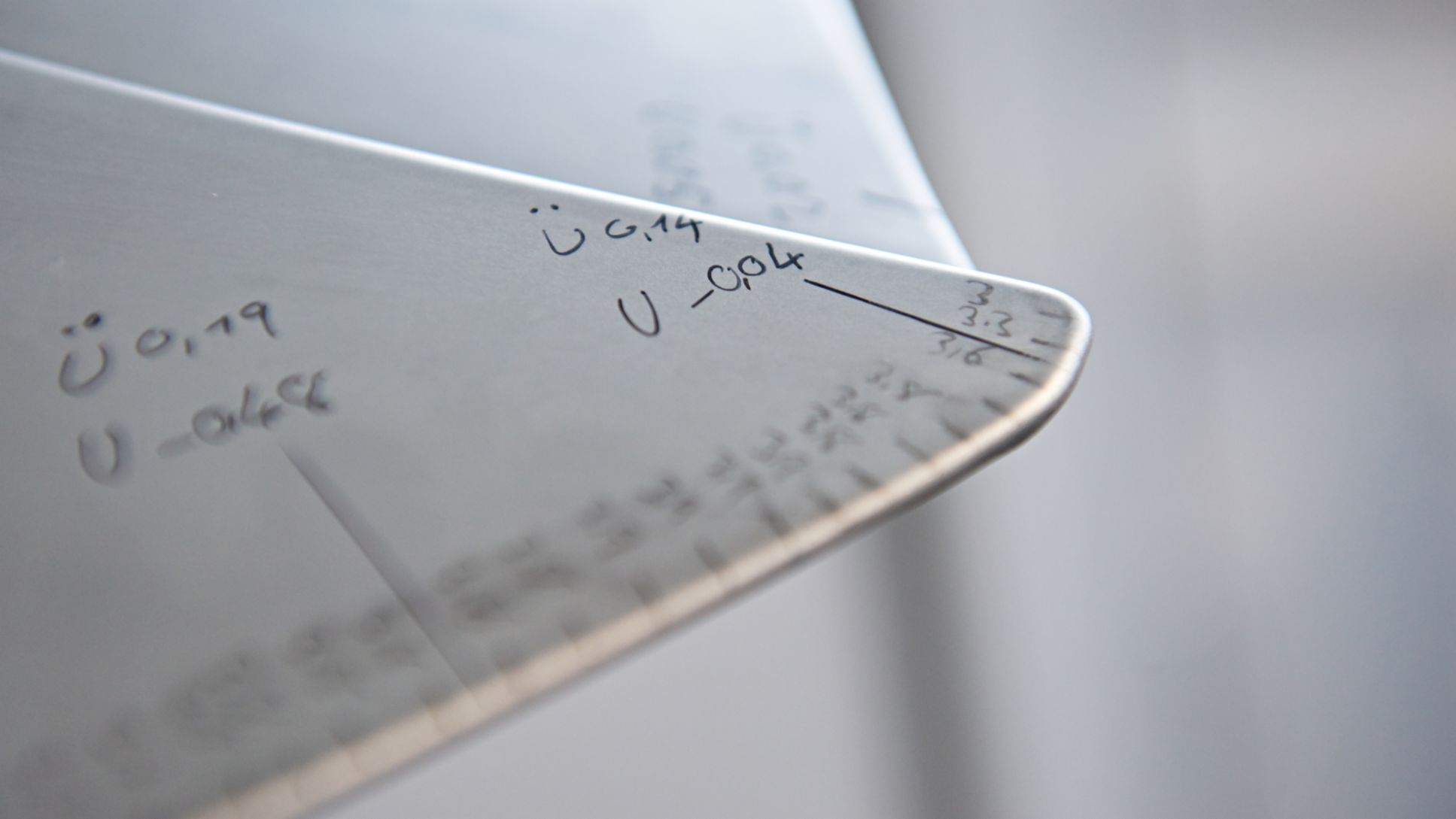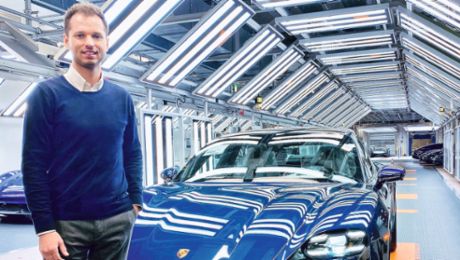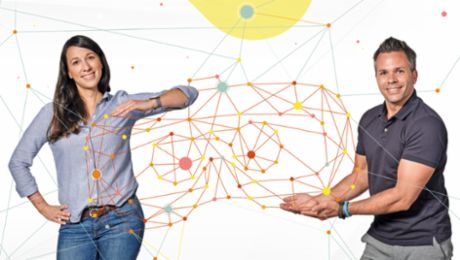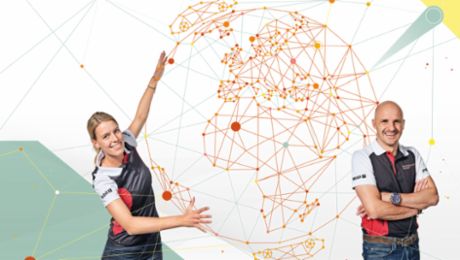A developer comes up with plans for a component. And you are the one who says, “Wait a minute, there are some problems in a few areas; we won’t be able to make it exactly like this, we’ll need some modifications!” As a specialist in process planning and concurrent engineering, you have a cool analytic mind. You are well versed in how the big tool systems operate, and you know what works. And what doesn’t.
That is all part of a day’s work for Michael Mohe (34). While an employee of KUKA Werkzeugbau, a Porsche supplier, he worked on side components for the Cayenne and the latest Macan. In 2015 Porsche acquired the supplier, and in 2016 Mohe joined the Taycan team in Schwarzenberg. Three years later he can hardly wait for the upcoming official premiere of the Taycan.
“It’s an incredibly exciting time,” he says, scarcely containing his enthusiasm. For this coolheaded analyst, who usually spends his days working on deep drawing and metal-forming properties and thinking about qualification and tool efficiency processes, the premiere is clearly a matter of the heart. It is also obvious how much he loves his job.
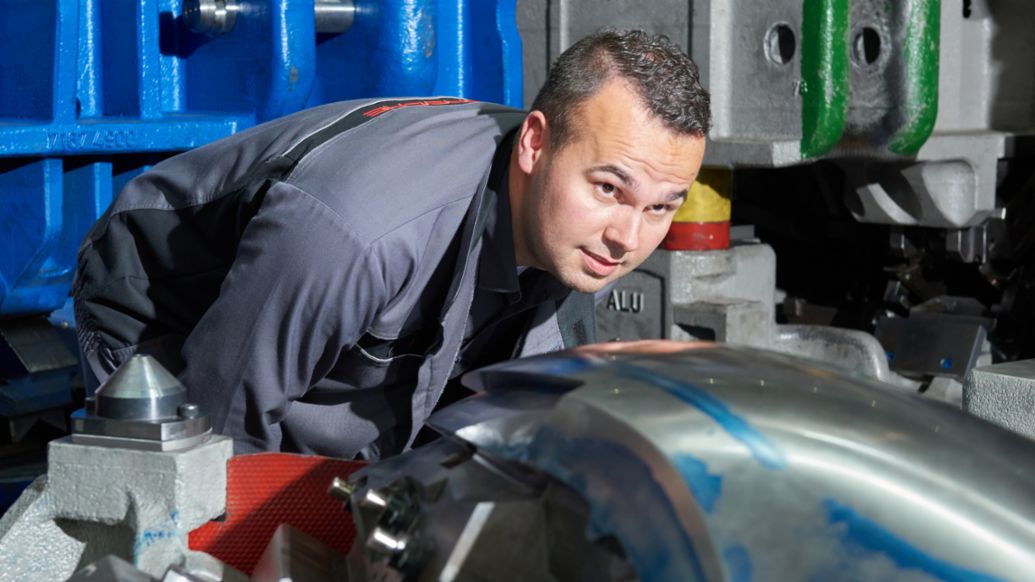
Schwarzenberg lies 120 kilometers southwest of Dresden, just down the road from the home of the Erzgebirge Aue club in Germany’s second-division pro soccer league. The town has been making tools for the past 120 years—and eighty years ago it developed tools that helped form the tops, rear windows, and cowls of the VW Beetle from single sheets of metal for the first time. And—even during the postwar division of Germany—Schwarzenberg continued to supply tools to VW in Wolfsburg.
Michael Mohe comes from the region around Schwarzenberg. As a schoolboy he already knew he wanted to work on cars and drive systems. “In high school you don’t really know what toolmaking consists of. You picture people making cordless screwdrivers,” he remarks. In 2004, he began a work/study program in Schwarzenberg and at the vocational academy in Riesa. At the time, the toolmaking business belonged to KUKA, the huge industrial robotics manufacturer. “In the first year of my studies I spent three weeks at the training workshop with a file in my hand, learning the basics to get a sense of what this field is all about.”
He earned his degree, was offered a job at the company, and worked in the design department. There he learned to design tools of all categories, to produce them, and to evaluate the quality of designs from outside the company. A promotion to process planning expanded his tasks and increased his responsibilities. He was now in charge of the complete process and the associated metal-forming systems: rolling, deep drawing, cutting, and remolding. “You accompany your tool through all the stages until it’s ready for production,” he says. “We’re in charge of efficiency and qualification, and then give the finished unit to the stamping plant. Our job finishes when series production starts.”
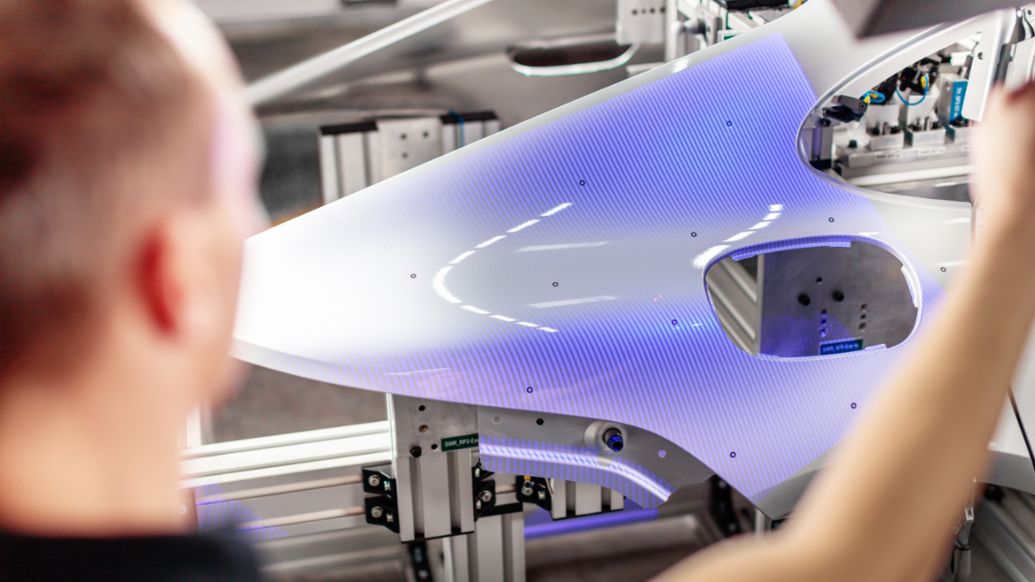
And what exactly does concurrent engineering mean? It consists of early, close coordination among different departments in the production process. As Mohe explains, “During the Taycan development phase, there were regular meetings every two weeks. People from development, planning, tool supply, and the body shop sat at the same table, gave progress reports, and went home with a whole package of new tasks.” Even when he was working for KUKA, he would still drive to meetings with his colleagues in Stuttgart. “But today, as a part of Porsche, we’re much closer to the heart of it all.”
There’s the “heart” again. But seriously, does it make a difference for a toolmaker if he’s producing something for a car with a combustion engine or an electric motor? Mohe laughs. Yes, it does! First of all, the motor in an electric car is small. Or it’s located on the rear axle. “That opens up a lot of room in the front, which means I can completely redesign the shape and the outer shell. For the Taycan we’ve created a beautiful combination of concave and convex forms. That lets you bring out the design—the Porsche DNA—even more strongly.”
“We know what the car looks like. But still it’s like waiting for a child to be born. Everyone is totally excited.” Michael Mohe
Second: fuel efficiency. To maximize the electric Porsche’s range, it was necessary to reduce its wind resistance. Third: lightweight construction. The Taycan’s shell is made entirely of aluminum. All the steel components are gone. As Mohe notes, “Aluminum behaves in more complex ways when it’s formed, and it’s also harder to predict its behavioral patterns.” It’s a good thing that the team in Schwarzenberg has many years of experience working with aluminum. “The site has lots of expertise, which is very helpful to us.”
Around 480 people in Schwarzenberg work on systems solutions for metal-forming and cutting tools. Using the latest simulation systems, a complete CAE process chain, and efficient production procedures, they make large-scale tools for shell components of Porsche cars. All the tools needed to produce the shell components of the Taycan—including the top, side walls, front flaps, and doors—were made at the site. Mohe waxes positively euphoric when talking about the fenders. “Some of those deep-drawn values had never been attained before.”
There’s no doubt about it—Michael Mohe has Taycan fever. “You’re absolutely right,” he says. “We know what the car looks like. But still it’s like waiting for a child to be born. Everyone is totally excited. We’ve worked so many years on this car, and now we’ll be seeing it on the roads! We did the first design studies in 2016 …” Time sometimes feels like a Porsche.
Michael Mohe
1984
born in Annaberg-Buchholz in the Ore Mountains, married, two children
2007
Engineering degree (BA), work/study program at the Riesa vocational academy (partner with KUKA Werkzeugbau Schwarzenberg)
2007–2013
CAD specialist at KUKA Werkzeugbau Schwarzenberg
2013–2014
Design department
Since 2014
Process planning, closely involved in the product development process
Text Jo Berlien
